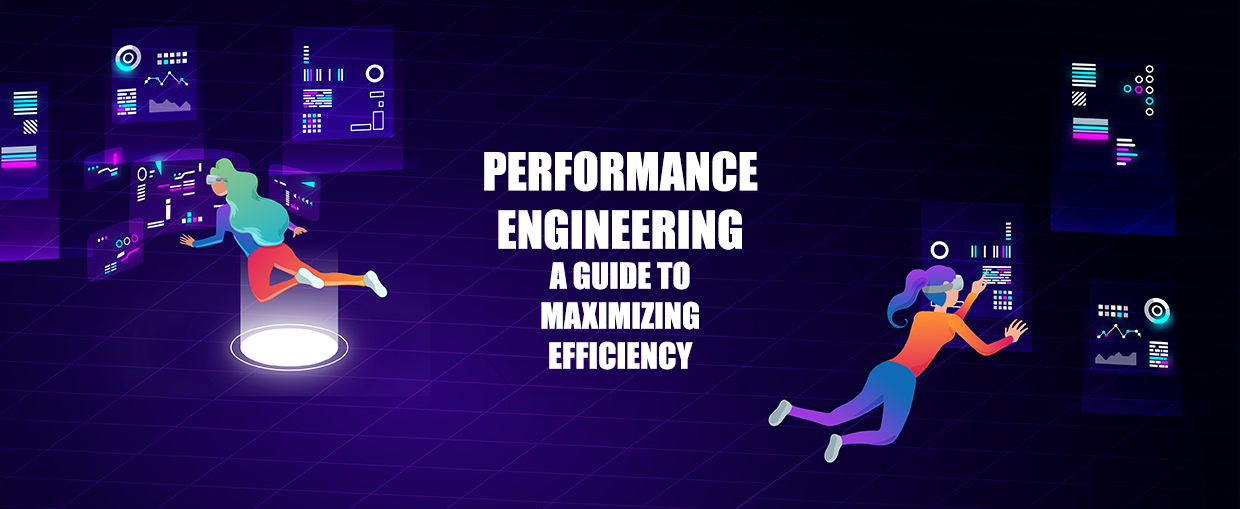Node js performance has been crucial in the last few years, apart from the rise of TypeScript and React, dozens of new frameworks, where Node.js has brought us over to the server-side. Google’s V8, which powers Node.js, is one of the fastest JavaScript engines in existence which is why every software development company uses it.
In simple benchmarks, well-optimized JS executed by V8 often performs almost at the same speeds as famously fast languages like C++. And yet, Node applications often seem to be pretty sluggish. This post aims to guide you through the process of measuring and improving Node js performance.
We’ll share a range of Node js performance optimization techniques; no matter your goal or skill level, there’ll be something here to help your application perform better under heavy loads without compromising on user experience.
Why Should You Go for Node js Performance?
Node.js is responsible for the development of diverse, popular applications, so it’s a valuable skill to be able to monitor and improve Node js performance. To give you an idea of how much ground it covers, here are the most common use cases of Node.js:
Real-time Web Applications
Node.js presents a highly suitable option for app development services that build real-time web applications, such as chat applications, gaming platforms, and collaboration tools. This is due to its event-driven architecture that allows for the creation of highly scalable and high-performing applications.
Additionally, Node.js excels in its ability to handle a large number of simultaneous connections, making it a suitable option for real-time communication.
Microservices Architecture
Node.js is well-equipped to support microservices architecture, a development approach that involves building applications as a suite of small, independently deployable services. Its architecture facilitates development, testing, and deployment of services independently, leading to improvements in overall application performance and scalability.
Node.js offers a lightweight and efficient runtime, making it an excellent option for creating microservices.
Single-Page Applications
The widespread adoption of Node.js is evident in its use for building single-page applications (SPAs), which provide a seamless user experience. SPAs require constant communication between the client and server, a task that Node.js is well-suited to handle. Moreover, Node js performance enables developers to use the same programming language for both the client and server-side of the application, which makes it easier to maintain and debug.
Server-Side Proxies
Node.js is a great choice for creating server-side proxies because of its lean and efficient runtime. The development of contemporary applications necessitates server-side proxies that can communicate with a variety of services and platforms.
Fortunately, Node.js can manage a vast number of simultaneous connections, making it a solid choice for constructing server-side proxies that require exceptional performance and scalability.
DevOps Tools
Node.js is also used for developing DevOps tools such as build automation, continuous integration, and deployment tools. DevOps involves automating the custom software development process to increase efficiency and reduce errors. Node.js provides a lightweight and efficient runtime that is perfect for building DevOps tools.
Methods to Enhance Node js Performance
Enhancing Node js performance is crucial for delivering efficient and responsive applications as per statistics. Whether you’re part of a software development company or seeking IT consulting services, implementing effective optimization strategies can significantly improve your application’s speed and reliability. Here are some practical methods to enhance Node js performance, ensuring your applications run smoothly and meet user expectations.
1. Utilize Node’s Built-in Profiler
Node.js offers an internal profiler that provides insights into your application’s performance. By running your application with the –inspect flag, you can access the profiler through Chrome DevTools. This tool helps identify bottlenecks, allowing you to focus optimization efforts effectively.
2. Implement Application Performance Monitoring (APM)
Integrating APM tools into your application offers real-time monitoring and detailed performance metrics. These tools assist in detecting issues such as slow database queries or memory leaks, enabling proactive maintenance and optimization.
3. Leverage Caching Mechanisms
Caching frequently accessed data reduces latency and decreases the load on your servers. Implementing strategies like in-memory caching or utilizing external cache stores can significantly enhance response times and overall application efficiency.
4. Optimize Data Handling
Efficient data processing is vital for performance. Techniques such as streaming large datasets instead of loading them entirely into memory help manage resources better and prevent application slowdowns.
5. Set Appropriate Timeouts
Implementing timeouts for external requests ensures that your application doesn’t hang indefinitely, waiting for responses. This practice maintains responsiveness and prevents resource exhaustion.
6. Ensure Secure Client-Side Authentication
Proper authentication methods protect your application and contribute to performance by preventing unauthorized access and potential abuse. Implementing secure authentication protocols is essential for maintaining both security and efficiency.
7. Utilize Clustering for Improved Throughput
Node.js operates on a single-threaded event loop, which can be a limitation under heavy loads. Using the Cluster module allows you to create multiple child processes, effectively utilizing multi-core systems and enhancing throughput.
8. Employ a Content Delivery Network (CDN)
CDNs distribute your content across multiple servers worldwide, reducing latency by serving data from locations closer to the user. This approach improves load times and reduces the burden on your primary server.
9. Adopt Asynchronous Programming
Leveraging asynchronous patterns enables non-blocking operations, allowing your application to handle multiple tasks concurrently. This method enhances scalability and responsiveness.
10. Optimize Database Queries
Efficient database interactions are crucial for performance. Techniques such as indexing, query optimization, and avoiding unnecessary data retrieval help reduce response times and server load.
11. Minimize Dependencies
Reducing the number of external dependencies decreases the potential for security vulnerabilities and bloat. Regularly auditing and removing unnecessary packages streamlines your application and enhances performance.
12. Implement Load Balancing
Distributing incoming traffic across multiple servers prevents any single server from becoming a bottleneck. Load balancers improve fault tolerance and ensure consistent performance under varying loads.
By integrating these strategies, app development services can deliver high-performing applications that meet user expectations. Additionally, engaging in QA consulting services ensures that performance optimizations are effectively implemented and maintained. For organizations looking to hire dedicated developers, prioritizing candidates with experience in these optimization techniques is essential for building efficient and scalable applications.
Implementing these practices not only enhances Node js performance but also contributes to the overall success and reliability of your applications.
The Wrap
Node.js is a strong platform for developing high-performance apps, but optimizing code may be difficult. You may increase the efficiency and security of your Node.js apps significantly by applying the strategies mentioned. Additionally you can always choose the support of an expert software development company to help you out with this.









